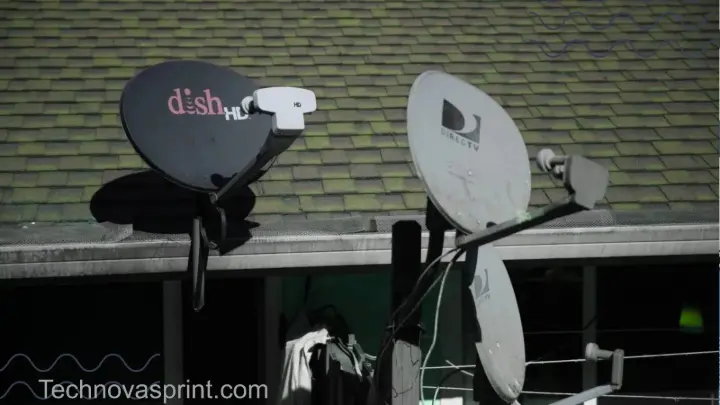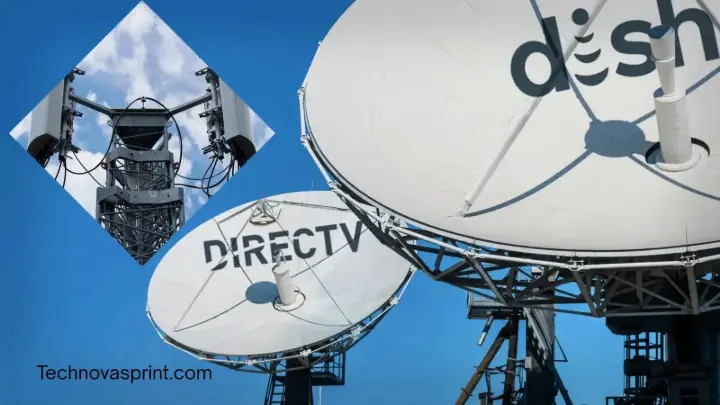Dish Network faces big money problems. The company owes billions of dollars. Many people wonder if Dish bankruptcies will happen soon. This guide explains everything about Dish's financial troubles.
Dish started as a satellite TV company in 1980. Charlie Ergen built the business from scratch. The company grew fast in the 1990s and 2000s. But things changed when streaming services became popular.
Now Dish loses customers every month. People cancel their satellite TV to watch Netflix and Hulu instead. This hurts Dish's main income source. The company also spent too much money buying wireless spectrum. These spectrum deals cost billions of dollars.
How Dish Network Started and Grew
Dish began as EchoStar Communications. Charlie Ergen sold satellite dishes door-to-door. He saw a chance to compete with cable TV companies. Satellite TV was new and exciting back then.
The company went public in 1995. Stock prices went up fast. Dish added millions of customers through the late 1990s. The business model was simple. Customers paid monthly fees for TV channels.
Dish competed hard with DirectTV. Both companies offered better deals than cable. Rural customers loved satellite TV. They could get hundreds of channels. City customers also switched from cable.
Key growth moments include:
- First satellite launch in 1996
- Reaching 1 million customers by 1997
- Adding HD channels in early 2000s
- Launching DVR services
- Growing to over 14 million customers by 2010
The good times lasted until 2010. Then everything started to change. Young people stopped watching traditional TV. They wanted to watch shows on their phones and computers.
Why Dish Has Money Problems Now
Dish faces several big financial problems. The main issue is losing customers. Every quarter, hundreds of thousands of people cancel their service. This means less money coming in each month.
At the same time, Dish spent huge amounts on wireless spectrum. The company bought airwaves from the government. These purchases cost over $20 billion. Dish hoped to become a wireless phone company like Verizon or AT&T.
The spectrum deals created massive debt. Dish must make payments whether they make money or not. The company also promised to build a 5G network. This costs billions more dollars.
Current money problems:
- Losing 400,000+ satellite customers per quarter
- $11 billion in total debt as of 2024
- $7 billion spent on wireless spectrum
- Must build 5G network by 2025
- High interest payments on loans
- Falling stock price
- Credit rating downgrades
Dish also faces tough competition. Netflix has over 230 million users worldwide. Disney+ grew to 150 million subscribers in just three years. These streaming services cost much less than satellite TV.
The company tried to compete with Sling TV. This streaming service launched in 2015. But Sling TV never made much money. It has only 2.5 million customers today.
What Experts Say About Dish Bankruptcies
Wall Street analysts worry about Dish's future. Many think bankruptcy could happen within two years. The company's debt keeps growing while income shrinks.
Credit rating agencies downgraded Dish's bonds. Moody's and S&P both cut the company's rating. This makes borrowing money more expensive. Banks see Dish as a risky investment.
Some experts think Dish can avoid bankruptcy. They point to valuable spectrum assets. These airwaves could be worth $50 billion or more. Dish could sell spectrum to pay off debts.
Analyst opinions:
- MoffettNathanson: "High bankruptcy risk by 2026"
- Wells Fargo: "Needs major restructuring soon"
- Goldman Sachs: "Spectrum assets provide some protection"
- Credit Suisse: "Cash flow problems getting worse"
- JPMorgan: "5G plan unlikely to succeed"
The wireless network plan worries many experts. Building a nationwide 5G network costs $10-15 billion. Dish doesn't have that much cash. The company would need to borrow more money.


How Streaming Hurt Dish's Business
Netflix changed everything for TV companies. It launched streaming in 2007. By 2015, Netflix had more subscribers than any cable company. This started the "cord-cutting" trend.
Cord-cutting means canceling traditional TV service. People keep internet but drop cable or satellite TV. They watch Netflix, YouTube, and other free services instead.
Dish lost over 8 million satellite customers since 2015. The bleeding gets worse each year. In 2023, Dish lost 1.5 million customers. That's $1.8 billion less revenue per year.
Streaming services cost much less than satellite TV. Netflix costs $15 per month. Dish packages start at $70 per month. Many streaming services are free with ads.
Impact of streaming:
- Dish satellite customers dropped from 14 million to 8 million
- Average customer pays $85 per month (down from $105)
- Young people never sign up for satellite TV
- Sports channels lose viewers to YouTube TV
- Local channels available free over-the-air
Dish tried to fight back with Sling TV. This was one of the first streaming services. But bigger companies like Disney and Apple joined the market. They have more money for content and marketing.
The 5G Wireless Plan Problems
Dish spent billions buying wireless spectrum. The plan was to become the fourth major cell phone company. T-Mobile, Verizon, and AT&T control most of the market.
The FCC required Dish to build a 5G network. The deadline is 2025. If Dish misses this deadline, they could lose the spectrum. This would be a disaster for the company.
Building cell phone towers is very expensive. Each tower costs $150,000 to $400,000. Dish needs thousands of towers across America. The company also needs fiber cables and equipment.
5G network challenges:
- Must cover 70% of US population by 2025
- Estimated cost: $10-15 billion
- Need partnerships with tower companies
- Require skilled engineers and technicians
- Face competition from established carriers
Dish signed deals with Amazon and other companies. These partnerships help with network construction. But Dish still needs billions in financing.
The wireless business is very competitive. T-Mobile and Verizon have decades of experience. They own thousands of cell towers and retail stores. Dish starts with almost nothing.
Could Dish Sell Assets to Survive?
Dish owns valuable assets beyond satellite TV. The wireless spectrum could be worth $50 billion. Some experts think this is the company's most valuable asset.
Several companies might want to buy Dish spectrum. Amazon needs wireless airwaves for its logistics business. Google could use spectrum for internet services. Even Apple might be interested.
Dish also owns customer data and technology. The company serves millions of homes across America. This customer base has value to other businesses.
Possible asset sales:
- Wireless spectrum licenses
- Satellite TV customer base
- Broadcast equipment and facilities
- Technology patents
- Real estate holdings
Selling assets could raise cash quickly. But it would also hurt Dish's long-term plans. Without spectrum, the company can't build a wireless network. Without customers, there's no recurring revenue.
Some analysts suggest partial sales. Dish could sell some spectrum while keeping the rest. This would raise cash without killing the 5G plan completely.
Learn more about telecom industry trends at TechnovaSprint.
What Happens If Dish Goes Bankrupt?
Bankruptcy doesn't always mean a company shuts down. There are different types of bankruptcy protection. Chapter 11 lets companies reorganize while staying in business.
In Chapter 11, Dish would work with courts to reduce debts. The company could cancel some contracts and cut costs. Creditors might accept less money than they're owed.
Dish customers would probably keep their service during bankruptcy. The satellite TV system would keep working. But the company might raise prices or cut channels.
Bankruptcy scenarios:
- Chapter 11: Company reorganizes and continues operating
- Chapter 7: Company shuts down and sells all assets
- Sale to another company before bankruptcy
- Merger with larger telecommunications firm
The wireless spectrum would be very valuable in bankruptcy. Courts might order Dish to sell spectrum to pay creditors. This could break up the company's 5G plans.
Employees would face uncertainty. Dish employs about 16,000 people. Some jobs might be cut to save money. But the satellite TV business would still need workers.
What This Means for Customers
Current Dish customers should watch the company's financial news. If bankruptcy happens, service might continue but could change. Prices might go up or channel lineups might shrink.
New customers should be careful about long-term contracts. If Dish goes bankrupt, customers might still owe money even if service stops. Read contracts carefully before signing.
Dish stock owners face big risks. The stock price fell over 80% since 2015. Bankruptcy could make shares worthless. Only invest money you can afford to lose.
Customer considerations:
- Keep backup entertainment options ready
- Avoid long-term contracts if possible
- Monitor service quality for changes
- Consider switching to streaming services
- Watch for sudden price increases
Many customers already switched to streaming. YouTube TV, Hulu Live, and other services work well. They cost less and offer more flexibility than satellite TV.
Industry Expert Predictions
Most experts think Dish has 12-24 months to fix its problems. The company needs to raise cash or find a buyer soon. Without major changes, Dish bankruptcies seem likely.
Some see hope in the spectrum assets. These wireless licenses have real value. A tech company might buy Dish just for the spectrum. This could save jobs and continue service.
The satellite TV business will probably survive somehow. Rural customers still need satellite service. Another company might buy this part of Dish's business.
Visit TechnovaSprint for the latest telecommunications industry analysis.
Final Thoughts on Dish's Future
Dish Network faces its biggest challenge ever. The company must act fast to avoid bankruptcy. Selling assets or finding a merger partner might be the only options.
The streaming revolution hurt Dish badly. Traditional TV companies can't compete with Netflix and YouTube on price. Customers want cheaper, more flexible services.
Dish's 5G wireless plan was bold but risky. The company bet everything on becoming a major cell phone company. This strategy might not work without more money.
Smart investors should be very careful with Dish stock. The company could go bankrupt or be sold cheaply. Either outcome would hurt shareholders.
For customers, having backup plans makes sense. Streaming services offer good alternatives to satellite TV. They cost less and work on phones, tablets, and computers.
The next two years will decide Dish's fate. Watch for news about asset sales, partnerships, or bankruptcy filings. This story isn't over yet.
Dish Bankruptcies: Impacts the Satellite TV Giant